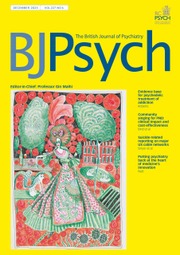No CrossRef data available.
Article contents
‘False positive’: understanding pseudocyesis through old and new perspectives
Published online by Cambridge University Press: 16 July 2025
Abstract
Pseudocyesis, also known as false pregnancy, is defined as the belief of being pregnant with physical signs and symptoms in the absence of a confirmed pregnancy. Notable cases include Queen Mary, who suffered from phantom pregnancies under societal pressure to conceive in the 16th century. Although now extremely rare, at its peak it accounted for 1 in 250 pregnancies following the Second World War, and was thought to be linked to heightened gender norms and sociocultural expectations around motherhood during this time. Pseudocyesis presents with complex and unique diagnostic challenges in clinical practice. It differs from delusional pregnancy, which is a fixed belief of pregnancy without physical signs or symptoms. The condition is often associated with infertility, psychological distress and neuro-endocrine conditions affecting the reproductive system. Management requires a multidisciplinary approach, integrating psychological support and addressing underlying reproductive health issues.
Keywords
Information
- Type
- Feature
- Information
- Copyright
- © The Author(s), 2025. Published by Cambridge University Press on behalf of Royal College of Psychiatrists



eLetters
No eLetters have been published for this article.